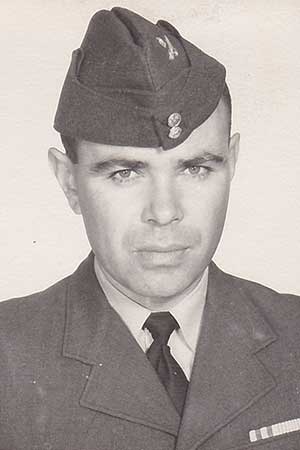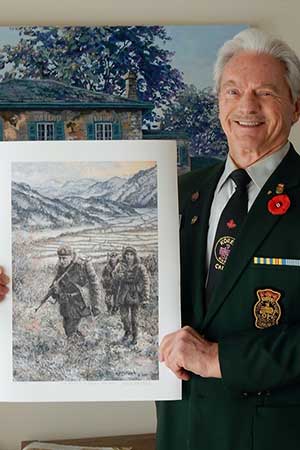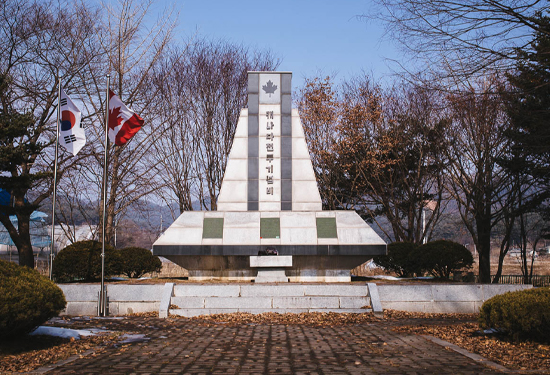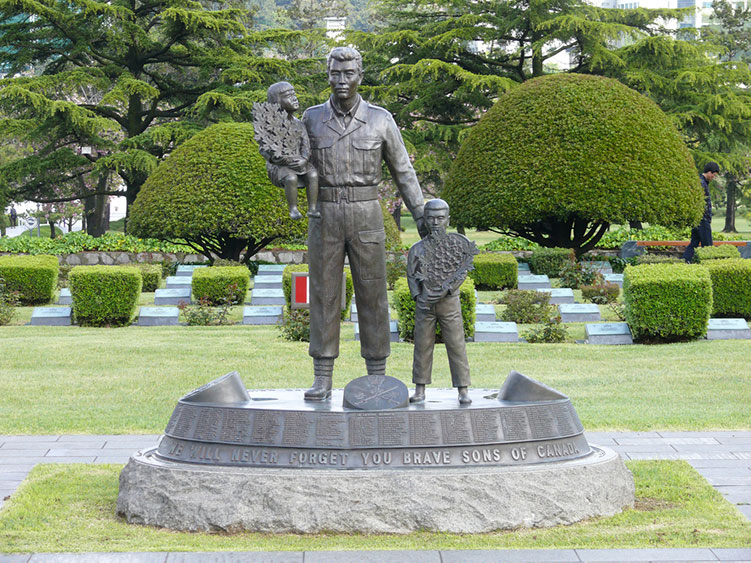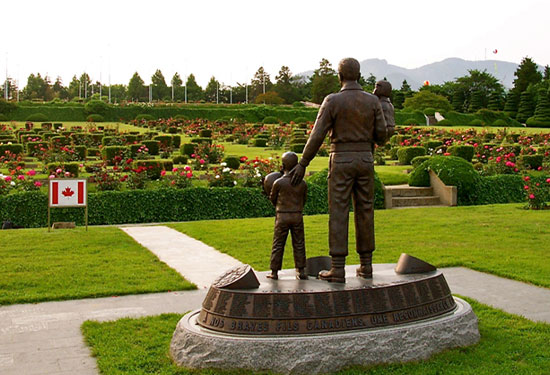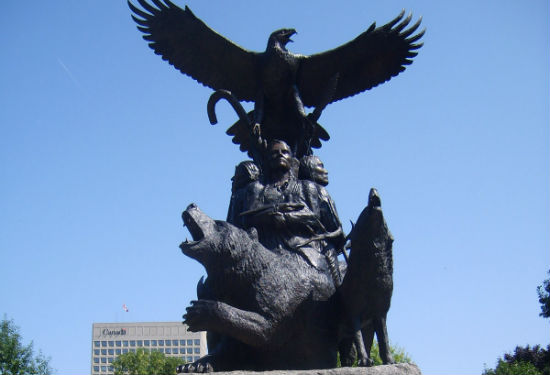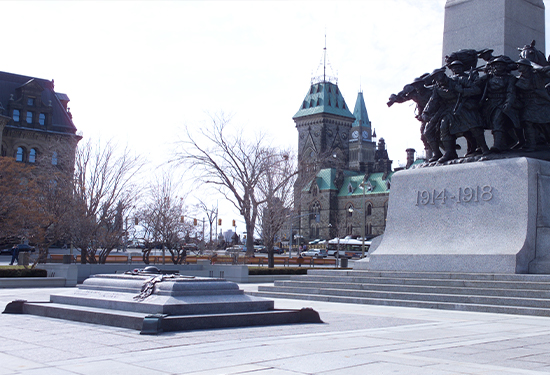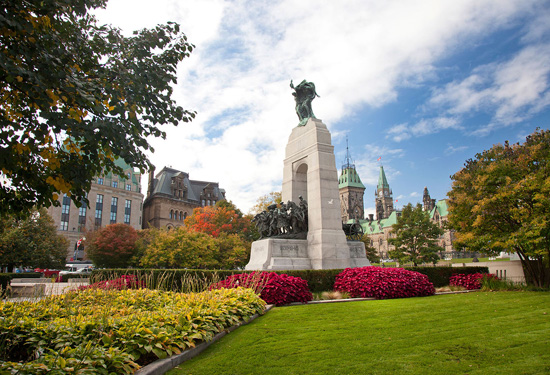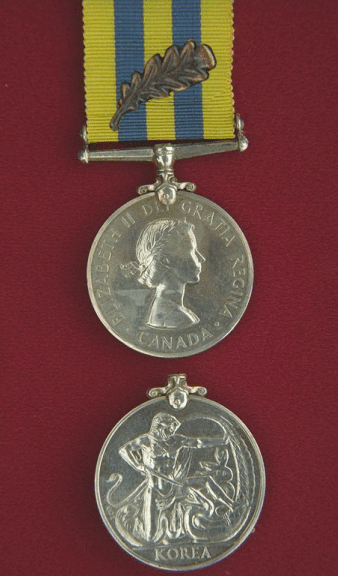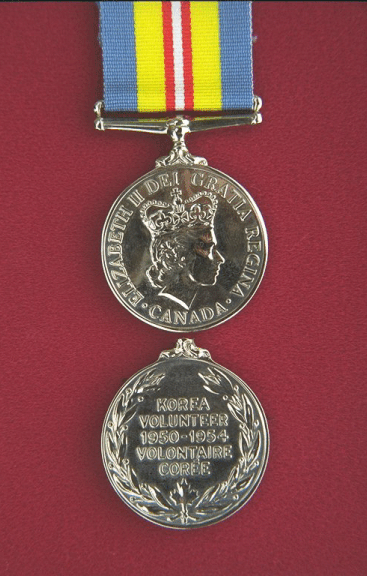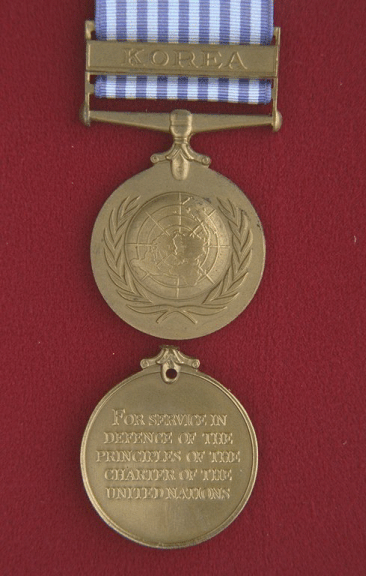
The Battle of Hill 355
Canadian soldiers saw heavy action on several occasions in the area of the front lines around Hill 355.
22 – 25 November 1951
Korean War
Table of contents
Introduction
More than 26,000 Canadians served in the cause of peace and freedom during the Korean War. One of the places that Canadian soldiers would see the most action was in the area around Hill 355, where they defended the front lines and pushed back heavy enemy assaults.

Battery of guns of 2nd RCHA supporting troops of 2nd RCR, June 1951. Photo: Library and Archives Canada PA-128820
The Korean War
The Korean War erupted on June 25, 1950, when North Korea invaded neighbouring South Korea after years of growing tensions. The result of this aggression would be more than three years of fighting that soon saw the United States and other United Nations (UN) countries intervene in support of democratic South Korea, and China enter the war on the side of the communist North Korea.
Canadians and Hill 355
When the UN called on its members in the summer of 1950 to form a multinational force to help restore peace, Canada agreed to help. The early stages of the war saw the combat push up and down the Korean peninsula as each side took turns undertaking major offensives. However by mid-1951 the lines began to solidify and the two sides dug in with deep defensive positions around the 38th parallel.

Canadian soldiers set up a machine gun position, May 1951. Photo: Library and Archives Canada PA-112639
The Canadians guarded their sectors of the front lines and conducted raids on enemy positions to gather intelligence and capture prisoners. During this period they were often deployed on or near Hill 355 (so named on military maps because it was 355 metres above sea level). In fact, every Canadian battalion that served in Korea would spend time there at some point during the war. Known as "Kowang San" to the Koreans, it was nicknamed "Little Gibraltar" by UN troops because of its prominent size and many defensive positions. The hill was located about 40 kilometres north of Seoul and was highly valued because it was the highest ground overlooking the surrounding front lines and supply routes. This strategic importance meant it would be the scene of fierce combat as both sides wanted to have it.
November 1951
On November 22, 1951, Canadian troops from the Royal Canadian Regiment, Princess Patricia's Canadian Light Infantry and the Royal 22e Régiment (nicknamed the "Van Doos") were shifted to a new stretch of the front lines almost seven kilometres long that bordered on the American-held Hill 355. The Van Doos were just getting settled in their positions under the shadows of Hill 227 and Hill 355 when the Chinese began an intense bombardment.
Shelling would continue into the following day, followed by waves of Chinese soldiers storming the Van Doos the afternoon of November 23. Our men found themselves surrounded before shelling and mortar fire drove the enemy back. Nearby, the Americans and Chinese struggled for control of Hill 355 itself. The Americans were pushed off for a time, leaving the Canadians exposed to even more fire from the enemy-held summit overlooking our defensive positions. It was desperate fighting in the snow, cold and mud that left the Van Doos with 16 killed, 44 wounded and three taken prisoner, but they held their ground until the Americans retook Hill 355 for good on November 25 and the communist attacks came to an end.

Machine-gun crew of RCR, May 1951. Photo: Library and Archives Canada PA-129115
October 1952
Canadians would again find themselves in heavy combat in the area of Hill 355 in October 1952. The Royal Canadian Regiment had been stationed on the hill since early September and enemy forces had periodically bombarded our positions throughout October, leaving the defenses badly damaged and weakened. The Chinese were clearly preparing for an attack and it finally came in the early evening of October 23. The enemy put down another heavy artillery barrage, then sent their soldiers forward in a large raid on our men's positions.
Under heavy assault and with communications cut off, some of the Canadians were forced to abandon their defensive positions to the surging enemy. UN force tank and mortar fire was turned to the captured areas, however, as well as on Hill 227, the area west of Hill 355 and the valley to the north. The Chinese withdrew and the Canadians succeeded in reoccupying the position in the early hours of October 24. This action had again taken a heavy toll, however, with 18 Canadians being killed, 35 wounded and 14 men taken prisoner.
Sacrifice
Canadian soldiers served with skill and bravery at Hill 355 during the Korean War. In addition to the sharp combat they saw, they would also guard the lines there for long periods during quieter periods on the front. Their efforts, however, took a high toll. In fact, more Canadians became casualties in battles and in patrols along this sector's front lines than anywhere else in Korea. Our fallen soldiers at Hill 355 were among the 516 Canadians who died in service during the Korean War and whose names are written in the Books of Remembrance located within the Memorial Chamber in the Peace Tower on Parliament Hill in Ottawa.
Legacy
On July 27, 1953, an armistice was signed that finally ended the active fighting in Korea. Our soldiers' sacrifices and achievements in the area of Hill 355 would be a significant chapter in Canada's Korean War history. In a conflict some would come to call "the forgotten war," Canadians would add to the proud national tradition of military service in the cause of peace and freedom that our country has demonstrated time and again in conflicts and peace support efforts over the years.

- Date modified:



